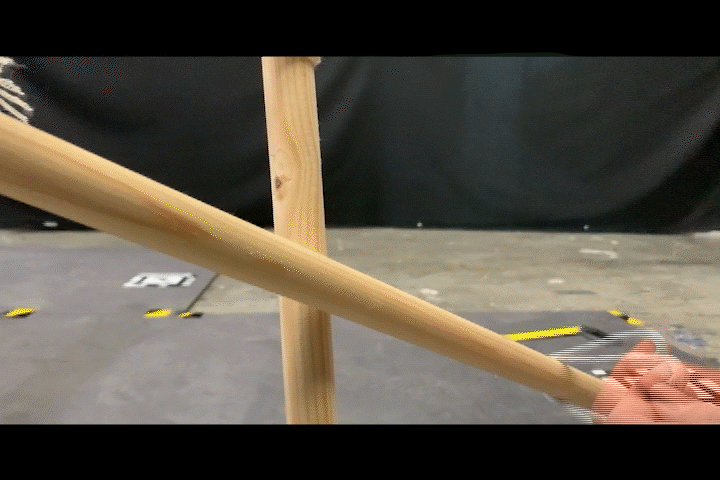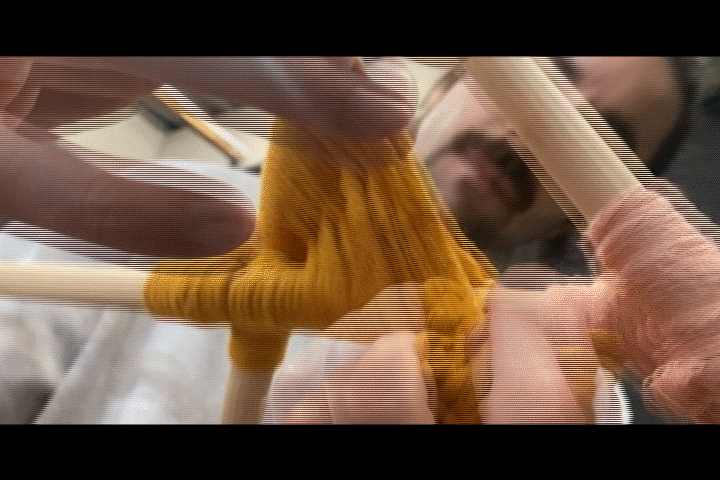Overview
As part of the overall assembly, this group was tasked with determining and implementing a lashing system that would be both easy to teach to the rest of the workshop and quick to execute as so not to delay the fabrication process, but most crucially would provide a structural connection to each of the nodes, whilst allowing for flexibility in a system that shifts over time and adding aesthetic value.
Inspiration
Several lashing methods were investigated and tested to ascertain which would best meet the goals outlined above.

Lashing investigations: diagonal lashing method (left 2), Filipino square knot (right 2)

Lashing investigations: god’s eye (left 2), Japanese square knot (right 2)
Lashing Design
In the end, the method chosen comprised a hybrid of a Japanese square lashing technique and the god’s eye knot – a knot used in native cultures for millennia. These two knots types, work harmoniously together, such that in the end product they are nearly indistinguishable.

Using the initial square knot provides a level structural integrity to the system and finishing off the with the god’s eye provides a decorative accoutrement that emphasizes the nodes geometry and a sense of human touch, of craftsmanship to the overall system.

The weaving then continued into the nodes, lending further appearance of the human hand and a softness to an otherwise rigid structure.
Robot See, Robot Do: Knots is a project by MRAC 01 students ?pek Attaro?lu, Alberto Martinez, and Robert Michael Blackburn, during Workshop 3.1 of the third term. This workshop was taught by Daniela Mitterberger, Lidia Atanasova, and Kathrin Dörfler.